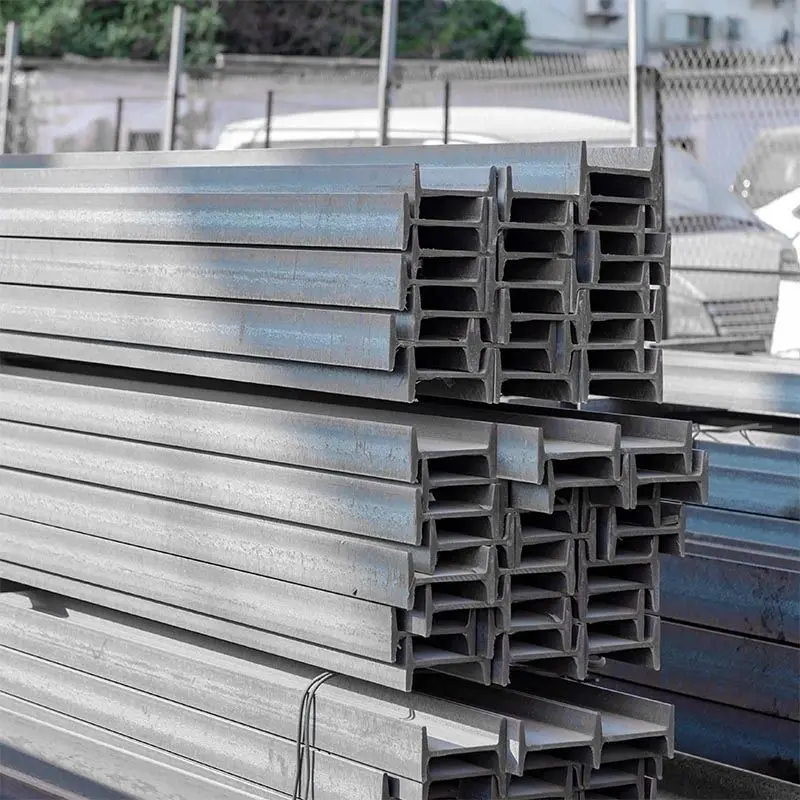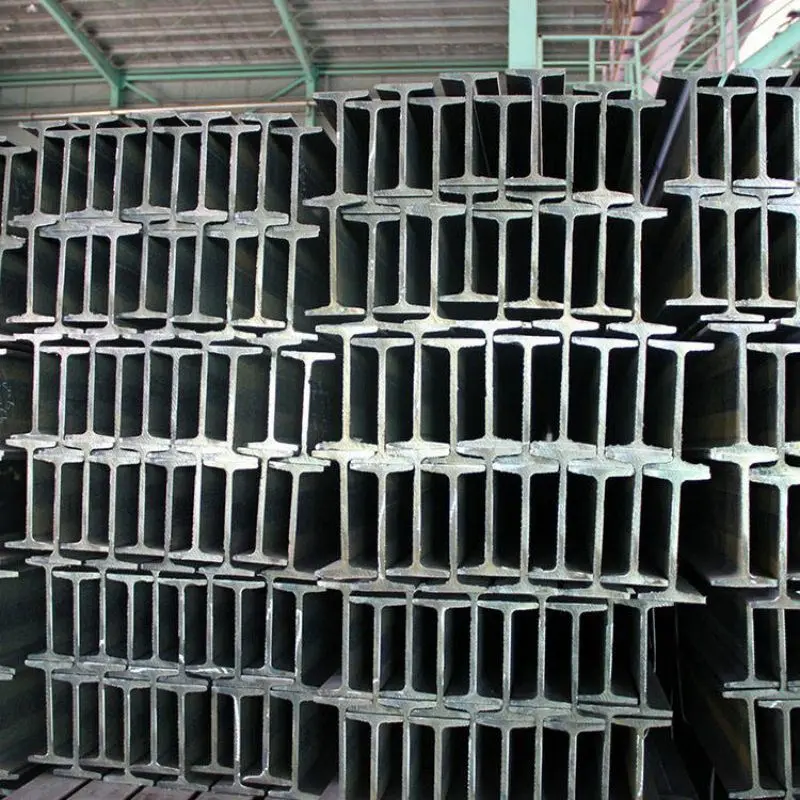0102030405
I-beam: The "steel backbone" of the construction industry, understand its characteristics and applications in one article
2025-05-14
I-beams, also known as steel beams, are long Steel Bars with an I-shaped cross-section. I-beamsare divided into ordinary I-Beams, lightweight I-beams, and wide wing I-beams.


They are steel sections with an I-shaped cross-section and are further divided into wide, medium, and narrow wing I-beams based on the height ratio of the flange to the web plate. The specifications produced by the first two are 10-60, which corresponds to a height of 10 cm -60 cm. The flanges of ordinary I-beams and light I-beams are thick at the belly plate and thin on the outside. Ordinary I-beams and light I-beams have formed national standards, and H-shaped I-beams are also known as wide flange I-beams. Among them, HW and HN I-beams have been widely used and produced in China.
The specifications of I-beams are expressed in centimeters of waist width, such as 10 gauge I-beams, which have a waist width of 10cm. The types of I-beams include hot-rolled ordinary I-beams, lightweight I-beams, and wide parallel leg I-beams (H-beams). The waist width of hot-rolled ordinary I-beams in China ranges from 100 to 630mm, denoted as No.10 to No.63, with a leg inner wall slope of 1:6. The pass systems for rolling I-beams include straight pass system, skew pass system, and hybrid pass system. In addition, I-beams can also be rolled using special rolling methods.
(1) Diagonal rolling hole system. This type of hole system refers to the two open legs of the I-beam hole not being on the same side of the waist at the same time, with an angle between the waist and the horizontal axis.
(2) Direct rolling hole system. The straight rolling pass system refers to a pass system in which the two open legs of the I-beam pass are located on the same side of the roll axis, and the waist is parallel to the roll axis.
(3) Mixed hole type system. According to the characteristics of the rolling mill and products, in order to fully utilize the advantages of their respective systems, a mixed hole system is often used, which is a combination of two or more systems. For example, the finished hole and the front hole of the finished product use a straight leg oblique rolling hole system, while other hole types use a bent leg oblique rolling system; Alternatively, the rough rolling holes can be processed using a straight rolling system, while the final 3-4 precision rolling holes can be processed using straight leg oblique piercing holes.
(4) Special rolling method. When it is difficult to produce the required I-beam using common rolling methods for some reason, a special rolling method can be used to fully utilize the techniques of uneven deformation and hole design. For example, when the cross-section of the steel billet is narrow and wider I-beams need to be rolled, the wave rolling method can be used; For example, when the billet is wide and requires the rolling of smaller I-beams, negative width expansion rolling can be used.
Widely used in various fields of the national economy, such as construction, bridges, power stations, oil drilling platforms, railways, and so on.
I-beams are used in construction and railway applications:
1. I-shaped steel, whether ordinary or lightweight, has relatively high and narrow cross-sectional dimensions, resulting in a significant difference in the moment of inertia between the two main axes of the section. Therefore, it can only be directly used for components that are bent in the plane of their web plates or to form lattice load-bearing components.
2. The selection of I-beams in structural design should be based on their mechanical properties, chemical properties, weldability, structural dimensions, and other factors.
When applied in bridges and oil drilling platforms, it is mainly used for the following:
1. Applied to the construction of temporary bridges.
2. Used for supporting the construction of box girders in the upper structure of bridges.
3. Used for pouring large volume concrete, as vertical ribs or supports.
4. I-beams are generally recyclable when used as construction measures.
I-beam, also known as steel beam, is a long strip of steel with an I-shaped cross-section. Its specifications are expressed in millimeters as waist height H * leg width B * waist thickness D. For example, "150 * 88 * 6" refers to an I-beam with a waist height of 150mm, leg width of 88mm, and waist thickness of 6mm; Its specifications can also be represented by the model number, which represents the number of centimeters of waist height, such as 14 #. For I-beams with the same waist height, if there are concentrated different leg heights and waist thicknesses, ABC needs to be added to the right side of the model number for differentiation. I-beams, such as 14a #/32n #/32d #, are widely used in various building structures, bridges, vehicles, machinery, and supports. The advantages and scope of application of I-beams are as follows:
Advantages of I-beams
1. I-beams can be designed to be strong and easy to cut and weld, and their length can be adjusted according to one's own needs;
2. I-beams are resistant to aging and have a long service life. Its main raw material is steel, which has better impact resistance and wear resistance than alternative materials, so its service life is also longer;
3. Lightweight, easy to construct, and improves project duration. Due to its special structure, I-beams are lighter in weight compared to other profiles in terms of strength and load-bearing capacity. During construction, they are easier to handle, which is beneficial for saving construction time and improving project duration;
4. Beautiful appearance. From the perspective of appearance, I-beams are symmetrical in terms of top, bottom, left, and right. Since ancient times, symmetry has been emphasized, so I-beams are more in line with public aesthetics in terms of appearance.
5. In addition, I-beams also have characteristics such as insulation, good magnetic permeability, fire resistance and flame retardancy, as well as insulation and heat insulation.
Scope of Application
1. Beam and column components in steel structures of industrial and civil buildings;
2. Steel bearing brackets for industrial structures;
3. Steel piles and supporting structures for underground engineering;
4. Equipment structure for industries such as petrochemicals and electricity;
5. Components of large-span steel bridges;
6. Ship and machinery manufacturing frame structures;
Contact Us for More Information
Email:manager@fsdsteel.com
Phone/Whatsapp:+86-18831507725















